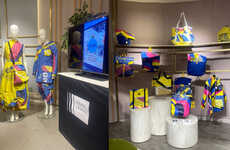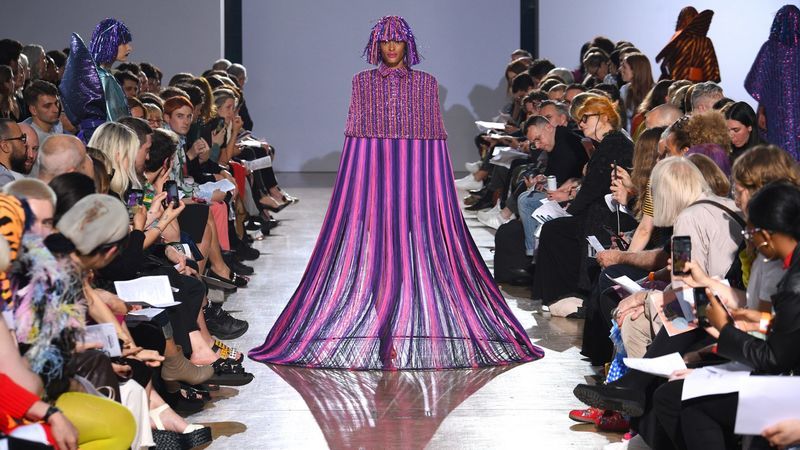
The 'It Was Better Tomorrow' Designs Features Unconventional Materials
Laura McQuarrie — November 12, 2019 — Eco
References: benjaminbenmoyal & dezeen
The It Was Better Tomorrow fashion collection by Central Saint Martins fashion student Benjamin Benmoyal features unconventional materials that have been woven to create colorful, structured garments. Recycled cassette tapes are prominently featured throughout the collection, which catches the light thanks to the natural shininess of the material.
The hand-woven garments also feature recycled yarns and Tencel and take inspiration from the color palettes of artists like James Turrell and Olafur Eliasson, as well as Icelandic landscapes. Other designs that influenced the creation of the optimistic collection include Brutalist architecture, as well as projections that people in the 60s and 70s had about what the future may one day look like.
Image Credit: Benjamin Benmoyal
The hand-woven garments also feature recycled yarns and Tencel and take inspiration from the color palettes of artists like James Turrell and Olafur Eliasson, as well as Icelandic landscapes. Other designs that influenced the creation of the optimistic collection include Brutalist architecture, as well as projections that people in the 60s and 70s had about what the future may one day look like.
Image Credit: Benjamin Benmoyal
Trend Themes
1. Recycled Fashion - The use of unconventional materials like recycled cassette tapes in fashion design presents an opportunity for disruptive innovation.
2. Hand-woven Garments - The trend towards hand-woven garments using recycled yarns and Tencel opens up possibilities for sustainable and artisanal fashion.
3. Inspiration From Art and Architecture - Drawing inspiration from artists and architectural movements, such as James Turrell and Brutalism, offers room for innovation in the fashion industry.
Industry Implications
1. Fashion Design - The fashion design industry can explore the use of unconventional materials and hand-weaving techniques to create unique and sustainable garments.
2. Textile Recycling - The textile recycling industry can capitalize on the demand for unconventional materials like recycled cassette tapes, promoting circularity and reducing waste in fashion.
3. Art and Fashion Collaboration - The collaboration between the art and fashion industries, drawing inspiration from artists and architectural movements, can lead to disruptive innovations in both sectors.
5.5
Score
Popularity
Activity
Freshness























